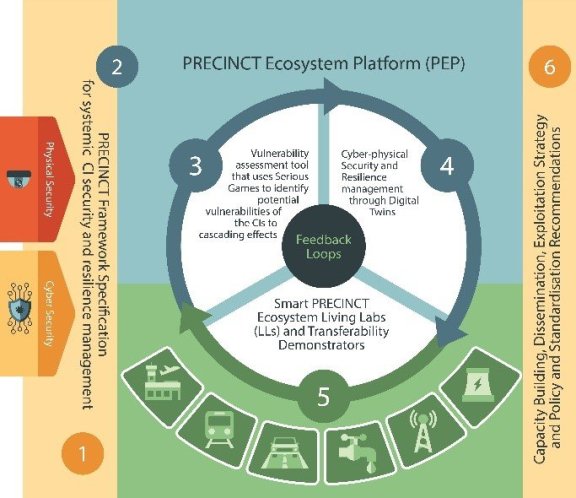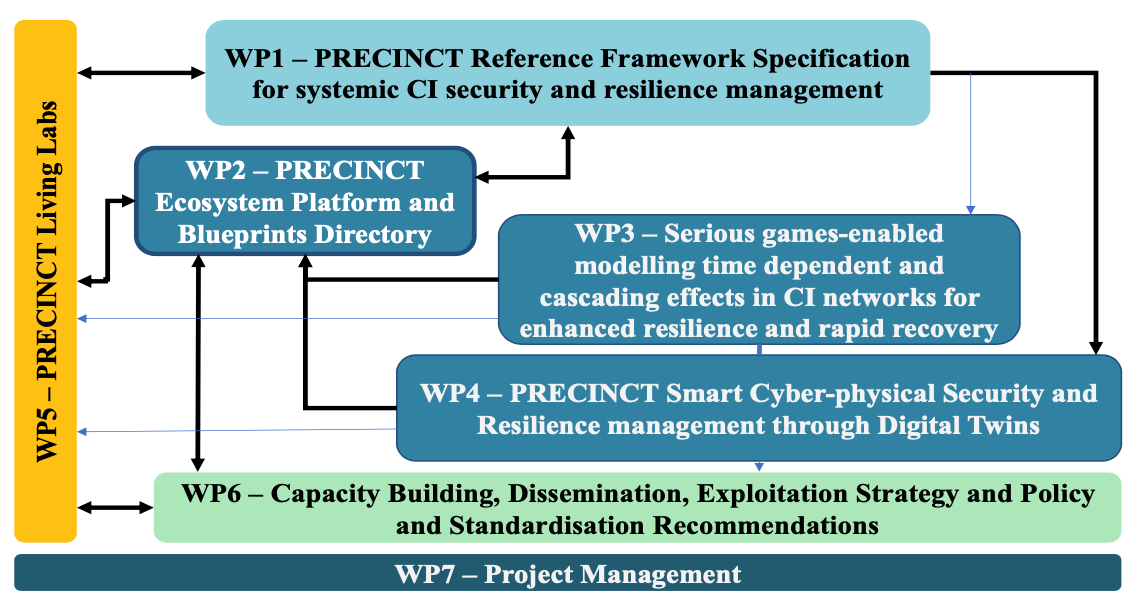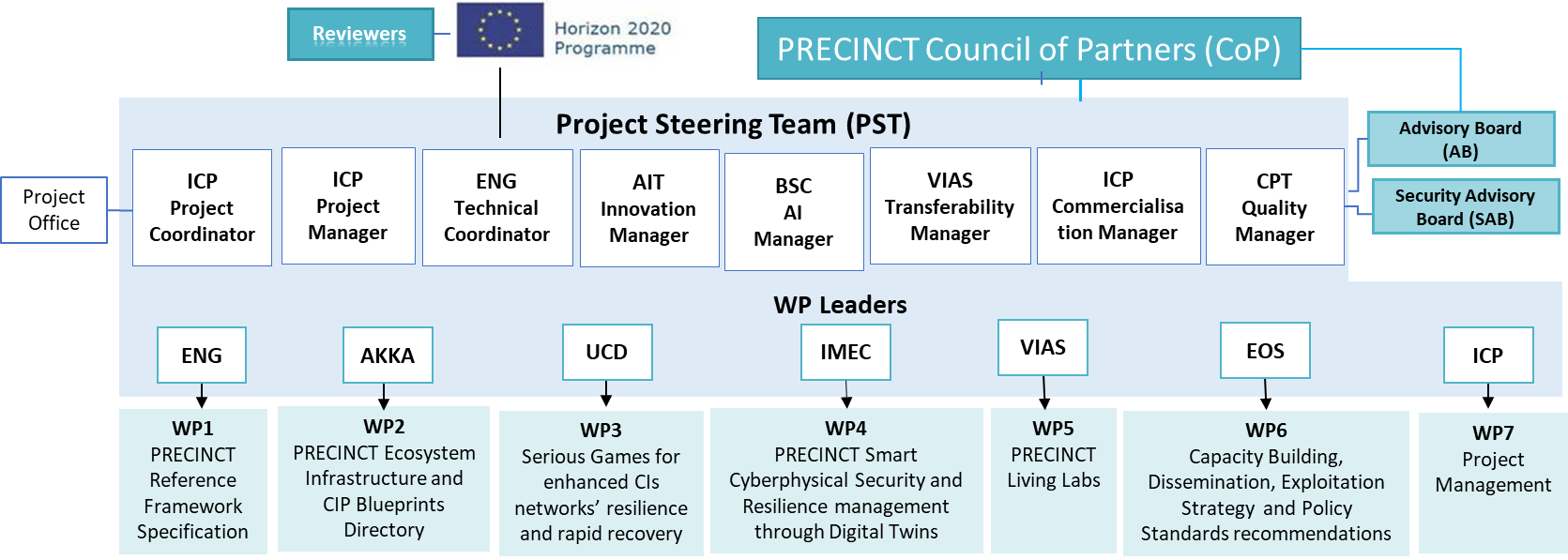About the PRECINCT project
EU Critical Infrastructures (CIs) are increasingly at risk from a variety of intentional cyber-physical attacks (malware, terrorist driven exploits, etc.) as well as risks from natural hazards (e.g. extreme weather, fires, earthquakes, disastrous consequences of global warming) and hybrid threats including fake news. Recent research and emerging solutions focus on the protection of individual CIs (ports, energy distribution, hospitals, …), however, the interrelationships between CIs has become more complex and managing the impacts of cascading effects and enabling rapid recovery is becoming more pertinent and highly challenging.
The PRECINCT project provided a model-driven collaborative and unifying cyber-physical security and resilience management platform for smart resilient PRECINCTs, leveraging advances from CIP and INFRA-01 projects, as well as the extensive body of work in Urban and Critical Infrastructure protection and resilience management (RESILENS, DRIVER, RESOLUTE thus exploiting, evolving and embodying key outputs and knowledge gained into the PRECINCT models and services.

- A PRECINCT Framework Specification for systematic CIs security and resilience management fulfilling industry requirements.
- A Cross-Facility collaborative cyber-physical Security and Resilience management Infrastructure enabling CI stakeholder communities to create AI-enabled PRECINCT Ecosystems and enhanced resilience support services.
- A vulnerability assessment tool that uses Serious Games to identify potential vulnerabilities to cascading effects and to quantify resilience enhancement measures.
- PRECINCT’s Digital Twins to represent the CIs network topology and metadata profiles, applying closed-loop Machine Learning techniques to detect violations and provide optimised response and mitigation measures and automated forensics.
- Smart PRECINCT Ecosystems, deployed in four large-scale Living Labs and Transferability Validation Demonstrators, provided measurement-based evidence of the targeted advantages and realized Digital Twins corresponding to the CIs located therein, included active participation of emergency services and city administrations with results feeding back to the Digital Twins developments.
- Sustainability related outputs including Capacity Building, Dissemination, Exploitation, Resilience Strategy, Policy/ Standardisation recommendations.
The structure

The Management Structure
The successful implementation of the PRECINCT international collaborative research project required efficient, well documented and structured project management procedures. It was particularly important to ensure that all beneficiaries were aware of their roles and responsibilities, understood the procedures for project management and reporting and had the tools and resources to implement the timely flow of information to allow execution within budget and schedule parameters. The PRECINCT project management structure was designed to meet the objectives of all stakeholders, including the EC, by creating strong consortium engagement in the project management enabling responsiveness to the evolving needs of the project.
- The Ethics Panel was chaired by the Quality Assurance Manager and includes legal advisors of the participating members (experts on ethics, privacy and legal issues) and an external Ethics Expert.
- The Advisory Board (AB) offered impartial scientific advice, supported the PST and advised the consortium on social, environmental, technological, legal and economic factors that influenced the innovation management of PRECINCT. The AB comprised a gender-balanced group of external advisors representing CI and security interests, drawn from across the world and embracing a range of knowledge of the project’s focus areas.
- The Security Advisory Board (SAB) addressed security matters and to ensure the proper handling of classified and sensitive information within the project they reviewed all the project deliverables, assessed whether they included any security sensitive information and proposed measures for preventing the misuse of such information. The results from the assessment was compiled in a Security Directory which was continuously updated throughout the project and made available to the Security Advisory Board.
